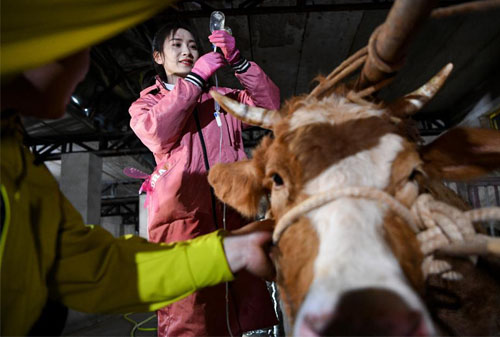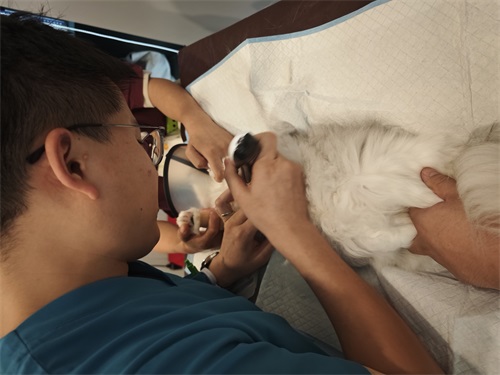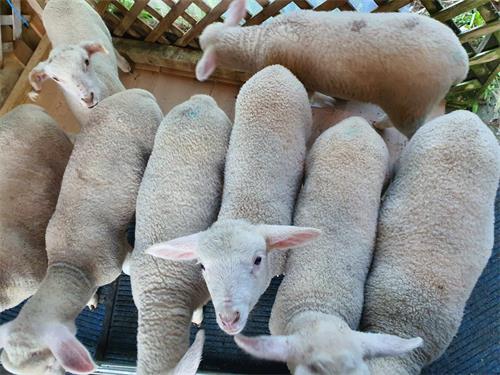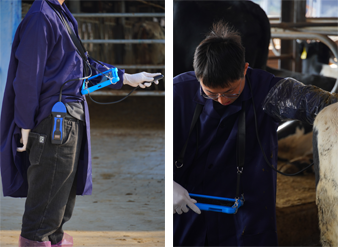When people talk about modern farming and veterinary medicine, one phrase comes up again and again: animal health monitoring. But what does it actually mean, and why is it so important today? Let’s break it down in simple terms and explore how farmers, veterinarians, and even pet owners use health monitoring to improve animal well-being and productivity.

What Does Animal Health Monitoring Mean?
Animal health monitoring is the practice of keeping track of an animal’s physical condition, behavior, and environment in order to detect health problems early. Instead of waiting for visible illness, veterinarians and farmers use tools and techniques to observe changes in body temperature, weight, activity levels, and internal organ function.
This monitoring can be as simple as daily visual checks or as advanced as using wearable sensors and ultrasound machines. The key goal is prevention. By identifying early warning signs, it becomes possible to treat diseases before they spread, reduce mortality rates, and improve the overall efficiency of animal production.
Why Is Monitoring So Important?
The importance of animal health monitoring cannot be overstated. In livestock farming, one sick cow or pig can quickly infect others, leading to large economic losses. In pets, unnoticed health problems can shorten lifespan and reduce quality of life. Monitoring ensures that animals are not only surviving but also thriving.
For example, early detection of lameness in dairy cows helps prevent long-term injuries. Monitoring the reproductive health of sheep or goats ensures higher pregnancy success rates. Even in zoos and wildlife reserves, health monitoring plays a vital role in conservation by reducing stress-related illnesses and supporting breeding programs.
What Tools Are Used in Animal Health Monitoring?
Health monitoring today combines traditional veterinary skills with advanced technology. Farmers still rely on simple tools like thermometers and weight scales, but digital solutions are becoming more common. Wearable collars, GPS trackers, and even wireless ultrasound probes are now part of the toolkit.
Among these, ultrasound technology has become especially useful. It allows veterinarians to see inside the animal’s body without surgery. Ultrasound can monitor pregnancy, check reproductive organs, and detect abnormalities like cysts or infections. Combined with other tools, ultrasound provides a clearer picture of animal health than visual inspection alone.
| Tool | Main Use | Advantages |
|---|---|---|
| Thermometers | Measure body temperature | Simple, fast, inexpensive |
| Wearable Sensors | Track activity, heart rate, feeding | Continuous monitoring, early alerts |
| Scales | Monitor body weight changes | Helps track nutrition and growth |
| Ultrasound | Check internal organs, pregnancy | Non-invasive, real-time imaging |
| Blood Tests | Identify infections, nutrient levels | Accurate diagnosis, lab-based |
How Does Monitoring Improve Farm Productivity?
Monitoring isn’t only about animal welfare—it also has a direct impact on farm efficiency and profits. Healthy animals eat better, reproduce more successfully, and produce higher-quality products. For dairy farms, this means more milk. For beef operations, it means faster weight gain. For poultry, it means better egg production.
By catching diseases early, farmers reduce treatment costs and avoid large-scale outbreaks. Automated monitoring systems save labor, allowing fewer workers to manage larger herds. In short, monitoring helps farms remain sustainable while maintaining high animal welfare standards.

What About Pet Health Monitoring?
Pet owners are also adopting health monitoring methods. Devices like smart collars can track a dog’s activity levels, calories burned, or sleep quality. Cats can be monitored for weight loss, which is often an early sign of illness. Veterinarians recommend regular check-ups, and many now use ultrasound for pets just as they do for farm animals.
This trend shows that health monitoring is no longer limited to agriculture. With growing concern for pets’ well-being, technology is helping owners take proactive steps to care for their companions.
Challenges and Limitations
While animal health monitoring brings many benefits, there are challenges too. Technology can be expensive, and not every farmer can afford advanced tools. Training is also needed—data from sensors or ultrasound scans must be interpreted correctly, or it can lead to false conclusions.
Another limitation is animal stress. Too much handling or frequent tests may stress animals and reduce welfare. Therefore, the best monitoring systems are designed to be non-invasive and easy to use.
The Future of Animal Health Monitoring
Looking ahead, animal health monitoring will likely become even more automated and precise. Artificial intelligence is being integrated into imaging and sensor analysis, helping veterinarians spot patterns faster. Cloud-based platforms allow farmers to store health data and share it with vets in real time.
The long-term goal is predictive health monitoring. Instead of simply detecting illness, future systems may predict when an animal is at risk before any symptoms appear. This shift will further improve welfare and reduce losses across farming and pet care.
Conclusion
Animal health monitoring is the practice of tracking and analyzing an animal’s condition to ensure better welfare and productivity. It combines traditional observation with modern tools like sensors and ultrasound. While challenges remain, the benefits far outweigh the difficulties.
Whether on farms, in clinics, or at home with pets, monitoring helps animals live healthier lives. And as technology continues to improve, this practice will only become more essential for veterinarians, farmers, and pet owners alike.
link: https://www.bxlimage.com/nw/1292.html
tags: Animal Health Monitoring








